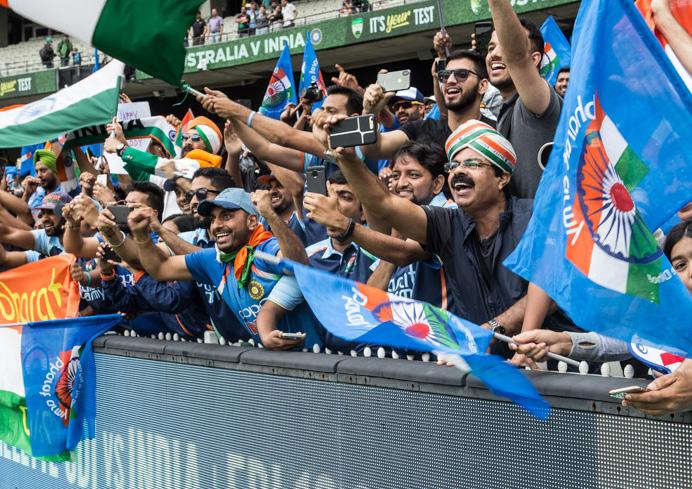
14 minute read
ticket to cricket
from 2019-01 Sydney (1)
by Indian Link
this year’s matches, particularly the Boxing Day match the Indian supporters were highly visible, with thousands attending all revved up and noisy. The Swami Army and Bharat Army offered full throttle support to the visiting Indian team.
From young girls holding placards for Virat Kohli to take selfies with them to Aussie fan club The Richies, there was never a dull moment at the G. I got amazing response from the crowd. They tried to capture my attention, offered high-fives when I walked past them or went delirious with posing when I aimed the lens towards them.
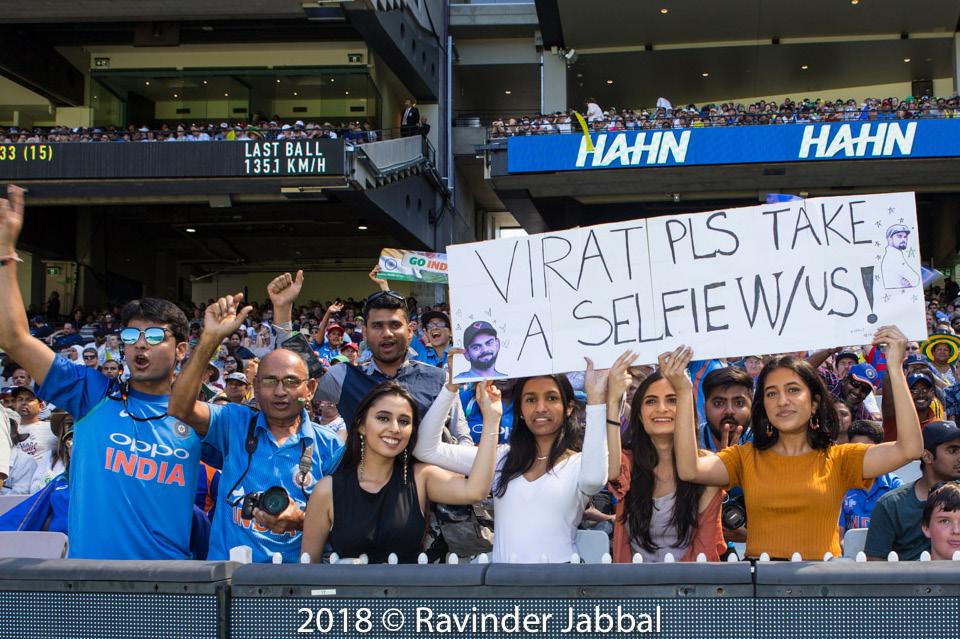
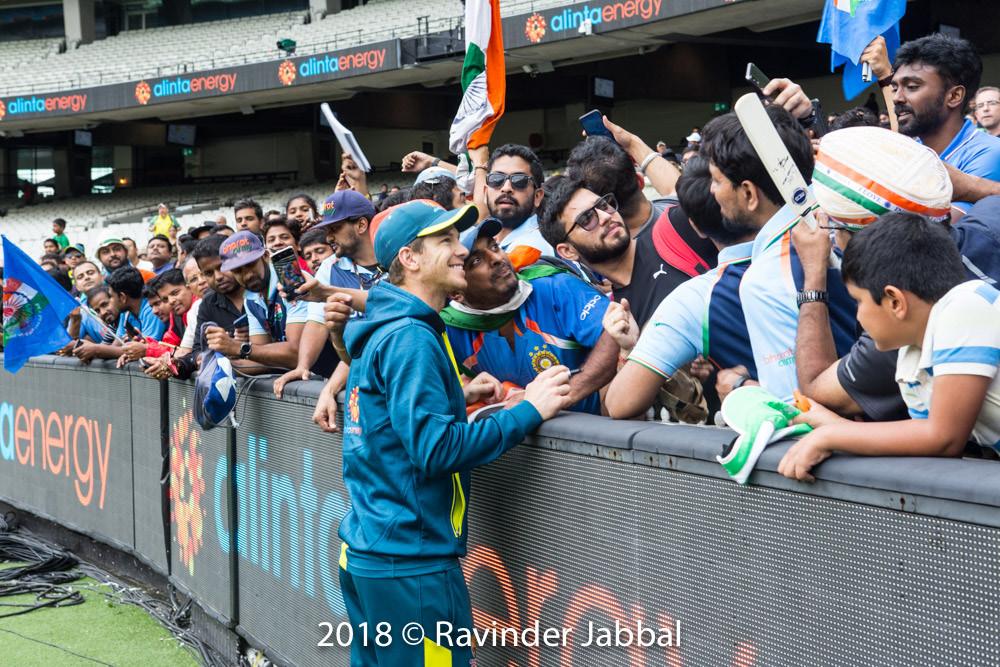
The cricketers, particularly the Indian team, did not warm up half as much to the cameras though. Despite our close proximity the established players avoided eye contact, remained aloof and mostly unsmiling. Some of the newcomers however would acknowledge my presence amongst the group of press photographers and occasionally smile at me.
I recall that the Paksitani cricketers when they were in Melbourne for the last match were a friendlier lot in comparison. I would often get asked, “Ki haal hai, bhaji?” (How are you brother?)”.
Indian cricketers like Kuldeep Yadav, Mayank Agarwal and K L Rahul, however, were more willing to hold or slow down to allow for a better shot. Jaspreet Bhumra even posed for photos with his fans in front of the bays. The superstars, on the other hand, did not seem as accessible. Virat Kohli who presented his signed cricket pads to a young boy in the audience recently made an exception.
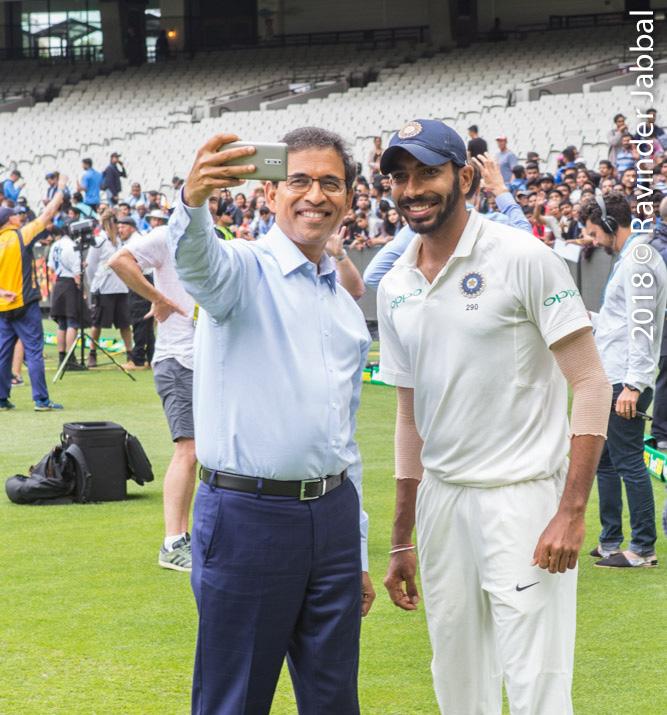
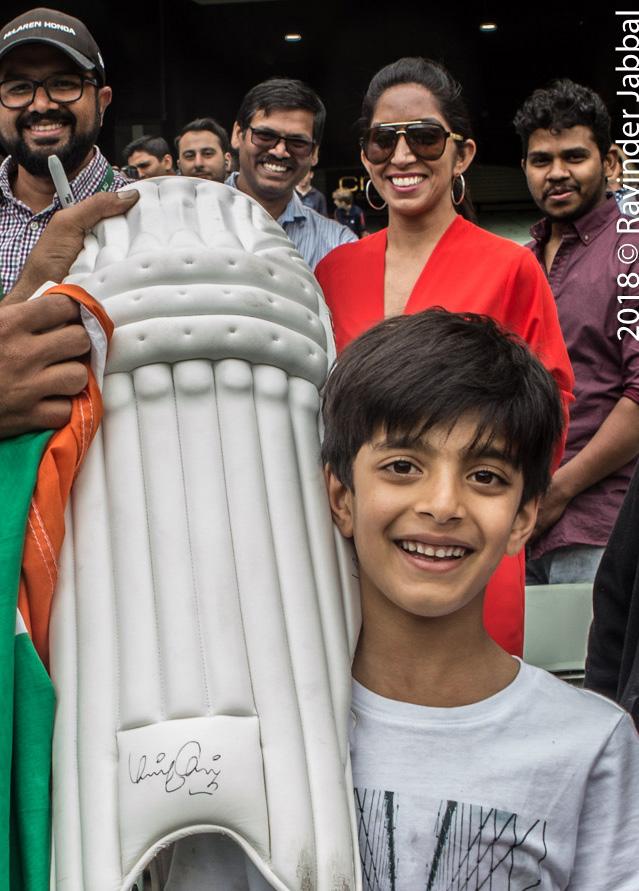
As India dominated the attack in Melbourne, the crowd was abuzz with excitement and that made for some great photos. The stadium erupted with deafening chants of “Kohli Kohli” or “India India” and the Indian tricolour flew everywhere. Creative slogans and posters popped up in the bays and little children were swept up on shoulders to allow for better viewing. There were opportunities everywhere to capture the sweeping excitement and I went completely trigger-happy. As a sports photographer I have my fair share of blurry images whilst trying to capture someone in action but the inspiration and drama of the game keeps me sharp and focussed. Just like the sportsmen that I capture with my lens, I also rely on practice, practice and more practice.
Gita Gopinath takes over as IMF chief economist
Eminent academic and former economic adviser to the Kerala government, Gita Gopinath has taken over as the International Monetary Fund's (IMF) chief economist in a time of global financial uncertainty.
In a sign of growing women power, she joins a select group of four women who will dominate the global economic sphere - her boss and IMF's Managing Director Christine Lagarde, World Bank's chief economist Pinelopi Koujianou Goldberg, and Kristalina Georgieva, the Bank's CEO who will become its interim President next month.
They confront the confluence of a retreat from globalisation, a trade war between China and the US, uncertainties in Europe over Brexit, weakening of several currencies against the dollar and the growing inequalities between nations and within countries.
When Lagarde announced in October Gopinath's appointment with formal title of Economic Counsellor and Director of the Research Department, she called her "one of the world's outstanding economists, with impeccable academic credentials, a proven track record of intellectual leadership, and extensive international experience".
"All this makes her exceptionally wellplaced to lead our Research Department at this important juncture. I am delighted to name such a talented figure as our Chief Economist," Lagarde said.
Before coming to the IMF, where she succeeded Maurice Obstfeld, Gopinath was the professor of International Studies and Economics at Harvard University.
She was concurrently appointed in 2016 as the economic adviser to Kerala Chief Minister with the rank of principal secretary.
She has also served as a member of the Eminent Persons Advisory Group on G-20 Matters for the Indian Ministry of Finance.
In addition to helping formulate policies for the IMF and set strategies and evaluate performance of nations, she will oversee the World Economic Outlook Report that is considered a major survey of the global economy.
A significant aspect of her position will be helping set the conditions for countries seeking bailouts from the IMF. Often the terms call for stringent financial regulations and unpopular belt-tightening for the recipients.
A graduate of Lady Sri Ram College in New Delhi, Gopinath received her MA degree from the Delhi School of Economics. She went on to Princeton University from where she got her Ph.D in economics in 2001 for her work on international macroeconomics and trade.
Gopinath was an assistant professor at University of Chicago before moving to Harvard in 2005. She received the Bhagwati Prize for the best paper published in the Journal of International Economics in 2003 and 2004.
In 2014, she was named one of the top 25 economists under 45 by the IMF and was a World Economic Forum Young Global Leader in 2011.
Her extensive research and writings include a critique of Prime Minister Narendra Modi's demonetisation in 2016.
Writing in the Project Syndicate within days of the demonetisation, she presciently said the government "seems to be causing collateral damage to India's economy."
Facebook elevates key Indian-origin executive to head enterprise service Workplace
Facebook has elevated its senior Indianorigin executive Karandeep Anand to head Workplace - the company's two-year-old enterprise communication tool now being used by over 30,000 organisations globally including in India.
Anand, who was earlier Head of Product for Facebook Marketplace and Payments services, would handle the product team and work closely with Julien Codorniou, current Vice President of Workplace.
As Head of Product for Marketplace and Payments tools, Anand's team was responsible for powering commerce across Facebook, Instagram, Messenger and WhatsApp.
"Karandeep will be partnering closely with Julien Codorniou, who will stay in his current VP role to lead Workplace sales and partnerships," the spokesperson added.
Before joining Facebook nearly four years back, Anand who is an alumnus of International Institute of Information Technology (IIIT), Hyderabad, spent 15 years at Microsoft in various key roles.
"I'm excited to now be part of the journey of bringing Workplace to companies across the globe and help them unlock the potential of their biggest asset - people," Anand wrote on his LinkedIn profile.
Facebook launched Workplace in 2016 to help make companies more connected and productive.
Currently, more than 30,000 organisations are using Workplace worldwide - including Walmart, Heineken, Spotify, Lyft and the Reliance Group. "A company's culture is leading indicator of its success and the productivity of its work force. Workplace brings the power of shaping culture by connecting people at work in ways never imagined before," Anand wrote.
Facebook in 2017 launched the desktop version of its Workplace Chat app that can be downloaded by anyone on PC, Mac, Android or iOS.
Workplace Chat includes video chat with a co-worker or group, screen sharing and file sharing.
"Workplace is one of the fastest growing Software-as-a-Service (SaaS) product and a key growth area for Facebook," said Anand.
American-Sikhs urge Pakistan to maintain Kartarpur complex in original state
American-Sikh communities have urged the Pakistan government to make sure that the Kartarpur Sahib Complex (KSC) is maintained in its original state. The American Sikh Council (ASC) said in a statement recently, "Any structural changes and/or additions to accommodate upcoming huge visitors either coming from India, Pakistan or the Sikh diaspora living across globe by lodging to restrooms and more must be done at a distance, away from the main KSC so that the Kartarpur Sahib original farms, natural areas spread around 100 acres of land that belonged to Guru Sahibji, and the forest areas around the River Ravi can retain as much of its originality as possible.
"This needs to be preserved in its original landscape for posterity."
The appeal was made in the background of recent development where both Pakistani and Indian governments agreed to open up the Kartarpur Corridor for Sikhs to visit the
Boats get freshly adorned in preparation of the Kumbh Mela festival in Allahabad, India, 8 Jan. Millions of Hindu pilgrims are expected to take part in the large religious congregation that begins this month on the banks of the rivers Ganges and the Yamuna. Photo: AP place where Guru Nanak Dev, the founder of Sikhism, spent 18.5 years of his life as a farmer, husband, father while spreading the word of love, humanism, universal sisterhood and brotherhood.
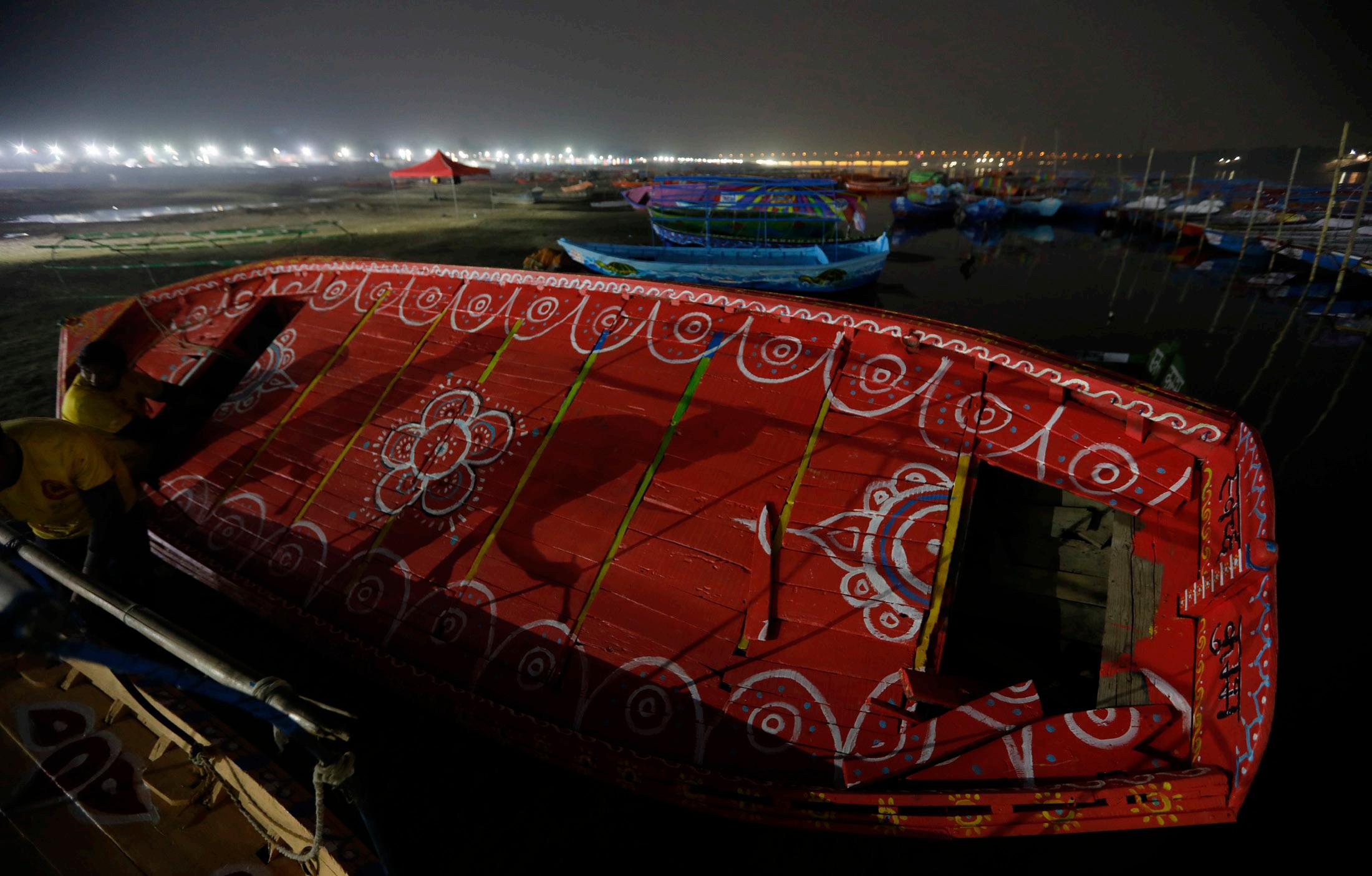
Gurdas Singh, ASC president, and Gurinder Pal Singh, Sikh in America (SIA) president, told Dawn news via phone that the Pakistani government might change the original archeological and cultural structure and lawns of the complex.
Gurinder Pal Singh said they feared that in the name of development sometimes original and historical architecture were not being taken care of by contractors.
"Such efforts must be and should be kept at bay without compromising original structure spread across 100 acres," he told Dawn. He said Sikhs everywhere yearned to visit Kartarpur and see the fields that their "Guru" tilled with his own hands, the place where he lived, the trees he sat under and feel and touch their forehead on the same dusty soil that their Guru walked on!
Both ASC and SIA Presidents thanked the Pakistani government for opening the Kartarpur Corridor and taking "proactive step towards peace and amity of two people (Indian Punjab and Pakistani Punjab) who have so much in common, from language to food, from Punjabi poetry to clothes and so much more".
Kartarpur Sahib can be called the first Gurdwara which was established in 1521.
Indian-American teenager wins Cornell University hackathon
An Indian-American teenager has won the inaugural "Digital Transformation Hackathon" at Cornell University for designing a device to detect the actual pain level of a patient during a diagnosis. The device designed by 17-year-old Mahum Siddiqi and her team uses neurological activity occurring in one's brain to help doctors more efficiently determine someone's pain levels.
"It's incredibly upsetting and problematic how hypothetical the concept of pain diagnostics is. Doctors have no way of knowing how little or how much pain someone is truly experiencing when they go in to be diagnosed," Siddiqi said in a statement on Friday.
A Year 12 student at Vestal High School in New York, Siddiqi was the only non-graduate student competing at the hackathon held earlier in December.
She and her team won the first prize at the competition, and are now working with representatives from companies such as Microsoft to produce a prototype of their pain-detecting device, the statement added. "We need to design a system where patients are looked at as a whole, and doctors are able to know for sure, using our device/pure science, how much pain a patient is experiencing instead of just their personal description/perception of their own pain," Siddiqi said.
ICC welcomes USA Cricket as its latest member
Following the expulsion of USACA a couple of years ago, the International Cricket Council (ICC) on Tuesday welcomed USA Cricket as its newest member.
According to an ICC statement, USA Cricket's application to become the 93rd Associate Member in accordance with the ICC Constitution was approved by ICC Members following the Membership Committee's recommendation to the ICC Board late last year and is implemented with immediate effect.
As a Member of the ICC, USA Cricket is now eligible to receive funding in accordance with the ICC Development Funding Policy and can sanction domestic and international cricket in the United States.
Welcoming the new body, ICC Chief Executive David Richardson said, "This is the culmination of a great deal of hard work and I would like to congratulate the Chair of USA Cricket, Paraag Marathe, and the Board, on this important milestone and wish them all the very best for the future."
USA Cricket Board Chair Paraag Marathe said, "USA Cricket was established to bring together the cricket community in the United States, develop the game and unlock the sport's undoubted potential for growth. Today's confirmation that it is the ICC's newest member is a significant staging post on that journey."
IPL 2019 to start March 23 despite general elections
The hugely-popular two-month-long Indian Premier League (IPL) will be played in India from March 23 despite the Lok Sabha elections due in April-May, ending the uncertainty over whether it would be shifted to some other country.
In 2009, the cash-rich tournament was held in South Africa due to the general elections while the 2014 edition was partly played in the United Arab Emirates (UAE) before returning home for the latter half.
The announcement on the commencement of the 12th edition of IPL was made by the Supreme Court-appointed Committee of Administrators (CoA).
"Based on the preliminary discussions with the appropriate central and state agencies / authorities, it was decided that the 12th edition of the world's most popular and competitive T20 tournament will be scheduled to be played in India," an IPL release stated.
"It is proposed that the IPL 2019 will commence on March 23. The detailed schedule will be finalised in consultation with the appropriate authorities. The CoA will then have a detailed discussion with all the stakeholders before releasing the IPL 2019 Schedule," it added.
Woman acid attack survivor turns saviour for burn victims
Even 12 years after she survived an acid attack by a jilted lover during a train journey to Delhi from her hometown Varanasi in Uttar Pradesh in April 2006, Pragya Singh remains a beacon of hope for scores of such burn victims. The gritty 35-year-old gritty has helped about 200 women victims of acid attacks undergo 300 surgeries for free and gave them not just legal and financial aid but also a job to rebuild their lives.
"The horrific incident happened 12 days after my marriage when I was 23. A vindictive ex-lover threw acid on my face and body. I was in intensive care for several weeks and had 15 surgeries over two years to open my nasal cavity and mouth," recalled Pragya as she spoke to IANS.
Living in Bengaluru since 2007 with her husband and later giving birth to two young daughters, Pragya set up Atijeevan Foundation in 2013 to make lives of other burn victims better and happier.
Though the traumatic incident took Pragya down the cosmetic surgery path to restore her face, she learned to accept her appearance to march ahead in life.
"I reconciled to the inevitable, as regaining the original face was wishful thinking," she said.
Determined to get back on her feet, Pragya put an end to the reconstruction surgeries once her vital organs became functional.
"Instead of being a victim, I decided to be the change for other women who are hapless victims of such a heinous crime. I have been fortunate to have a supportive family financially and emotionally during the treatment and recovery phase," noted Pragya.
Acid attacks on women in their 20s are mostly by men whose romantic advances were rejected, or spurred by family feuds, including dowry harassment and land disputes.
"Women account for about 80 per cent of acid attacks, while the remaining 20 per cent are on men and children," said Pragya.
The caustic attacks with sulphuric or nitric acid, on sale at chemical stores, melt skin tissues to expose bones and cause damage to the eyes, leading to partial vision or blindness.
"Each surgery for restoration of functioning of nose, mouth and eyelids cost a whopping Rs 60,000-1 lakh, depending on the intensity of the acid burn," revealed Pragya.
"Some of the victims undergo 35-40 surgeries after a severe burn, which are expensive and cause distress for years to them and their families," she said.
Her foundation provides acid burn survivors a holistic support system and has tied up with over 15 private hospitals across the country to provide quality medical care to acid burn patients. The NGO, which functions on private donations, also bears the surgery cost for women victims who cannot afford it.
One such survivor, Deepmala Tiwari of Lucknow, 28 was attacked with acid by her husband in 2014 when he learnt that she made more money than him.
Unable to afford the treatment, she reached out to the foundation after learning about it through a friend.
"Pragya has been in touch with me ever since, and the foundation took care of all the costs for me to receive over 10 surgeries and filled confidence in me and my family to continue leading our lives," she recounted.
She also received a course in computer science before returning to her teaching job in Balrampur. Deepmala now supports other acid attack victims as a coordinator for the foundation.
Deepmala in turn referred the foundation to 23-year-old Reshma Khatun, who suffered an acid burn at the age of 19 after she rejected a man's proposal for marriage.
"With the foundation's support, I could complete a vocational course in computers and find a job," Noida-based Reshma told IANS.
Reshma, who works as a housekeeping staff at a 5-star hotel in Noida, said an acid attack makes earning a living difficult, with employers reluctant to hire the survivors.
According to the National Crime Records Bureau (NCRB) of the Union Ministry of Home Affairs, there were 200 cases of acid attacks on women in 2016 alone, although NGOs estimate the number of such attacks to be about 500-1,000 across the country.
"Seven of our field workers are acid burn survivors. When they visit homes of fellow victims, the understanding among them and their families is better as life need not stop because of the attack," said Pragya.
With the help of volunteers, the foundation also hosts camps and workshops for the burn survivors across cities and towns in the country, offering free legal assistance, medical treatment and counselling.
"We empower burn patients with skills and vocational training for enhancing their livelihood. We help them in learning computer skills, handicraft making or pursuing higher education. Enabling surgeries are not enough as they need a purpose to get back to normal life," said the burn-survivor-turned-activist.

Following the Supreme Court's 2015 ruling directing states to consider acid attack victims as disabled for jobs, India Inc, which was hesitant to hire burn patients, have been open to include them in their workforce, as part of their quota to include the disabled in their companies. Even as she admits that ban on sale of acid in the market was not feasible, as it is used for industrial products and sanitation, she wants states to regulate its supply in a diluted form across the country.
Yuva Halla Bol: A youth summit against depleting job opportunities
Over 50 youth organisations from various states joined 'Yuva Halla bol' movement under one umbrella and called for holding a historical youth summit in national capital on January 27, protesting against all selection commissions, depleting job opportunities in the country and expose corruption in recruitments making government accountable. Addressing the media at Delhi Press Club, representatives of 50 youth groups such as Berozgar Sena, Yuva Shakti Sangathan, Youth for Swaraj and others demanded that all the vacancies in the government and public sector be immediately filled.
"We demand that the government must implement a model exam code to ensure that every recruitment process is completed within 9 months," said Yuva Halla Bol leader, Anupam.
"The government must also ensure fair selection by ending the present regime of paper leaks, delays and corruption in recruitment process," he said. "While 24 lakh posts lie vacant, the youth is frantically looking for jobs."
Launched in March 2018 during the spontaneous nationwide youth upsurge against the SSC scam, the #YuvaHallaBol initiative has evolved as a powerful platform for India's job-aspiring youth, aggrieved and agitated by the incompetence and insensitivity shown by recruitment bodies.
BY RITAM MITRA
You may have missed it amidst the sheer volume of batting records India broke during the first two days of the SCG test match, but early on during the match, Indian broadcaster Sony quietly switched off Australian commentator Kerry O’Keeffe, blacking him out from Indian airwaves. Instead, Sony (which passes through the feed from Australian broadcaster Fox Sports) opted to replace O’Keeffe’s stints at the microphone with commentary from a local commentary team whenever the 69-year-old was on air, blacking him out from Indian airwaves.
First, to O’Keeffe’s comments. They were not well thought-out and were clumsy at best; but they were by no means malicious.
First, O’Keeffe joked that Mayank Agarwal’s first class triple-century against Railways came against the Railways “canteen staff”, a comment for which he apologised on-air on the very same day. Then O’Keeffe remarked, poking fun more at his own inability to pronounce the Indian players’ names than anyone else, “Why would you name your kid Cheteshwar Jadeja?” It was a comment so benign that, were it said on the field, no one would have batted an eyelid. Nevertheless, O’Keeffe penned a generally well-written apology letter to Indian fans, where the matter ought to have ended.
O’Keeffe’s sledgehammer wit centres around regular self-deprecation and a steadfast refusal to take anything – especially himself – too seriously. Commentary in Test cricket is a difficult art; it is not easy to keep the viewer engaged and occupied in a game where there are often long and meandering periods of nothingness. To adopt O’Keeffe’s approach is to acknowledge the vicissitudes of Test cricket, which ebbs and flows perhaps more than any other sport in the world.
It is worthwhile noting also that O’Keeffe is one of the most well-researched











